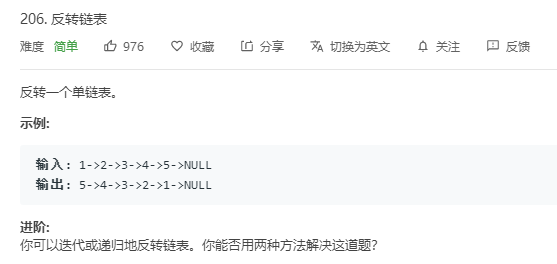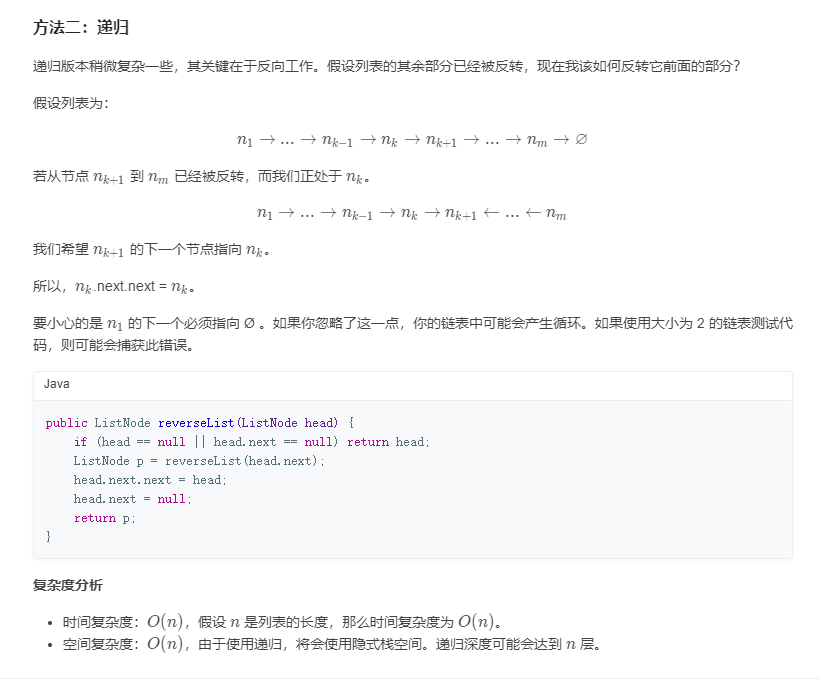
#思路


# 思路:定义一个当前节点,赋值为head,定义一个pre作为反转后的第一个节点,定义一个临时node 存放当前节点的下一个节点
/** * Definition for singly-linked list. * struct ListNode { * int val; * ListNode *next; * ListNode(int x) : val(x), next(NULL) {} * }; */ class Solution { public: ListNode* reverseList(ListNode* head) { ListNode* current = head; ListNode* pre = NULL; while(current!=NULL) { ListNode*temp = current->next; // 定义一个指针专门保存current的下一个节点 current->next = pre;//将第一个指针指向前面一个 pre = current;//指针滑动直到current为空为止 current =temp; } return pre; } };
代码2:
/** * Definition for singly-linked list. * struct ListNode { * int val; * ListNode *next; * ListNode(int x) : val(x), next(NULL) {} * }; */ class Solution { public: ListNode* reverseList(ListNode* head) { if (head == NULL) { return NULL; } ListNode *pre = NULL; ListNode *next = NULL; while(head!=NULL) { next = head->next; //获得下一个节点 head->next = pre;//将前一个节点附在后面 pre = head;//交换节点 head = next; } return pre; } };
# 递归解法:
/** * Definition for singly-linked list. * struct ListNode { * int val; * ListNode *next; * ListNode(int x) : val(x), next(NULL) {} * }; */ class Solution { public: ListNode* reverseList(ListNode* head) { if (head == NULL || head->next ==NULL) { return head; } ListNode *pre = reverseList(head->next); //递归解法 head->next->next = head; head->next = NULL; return pre; } };